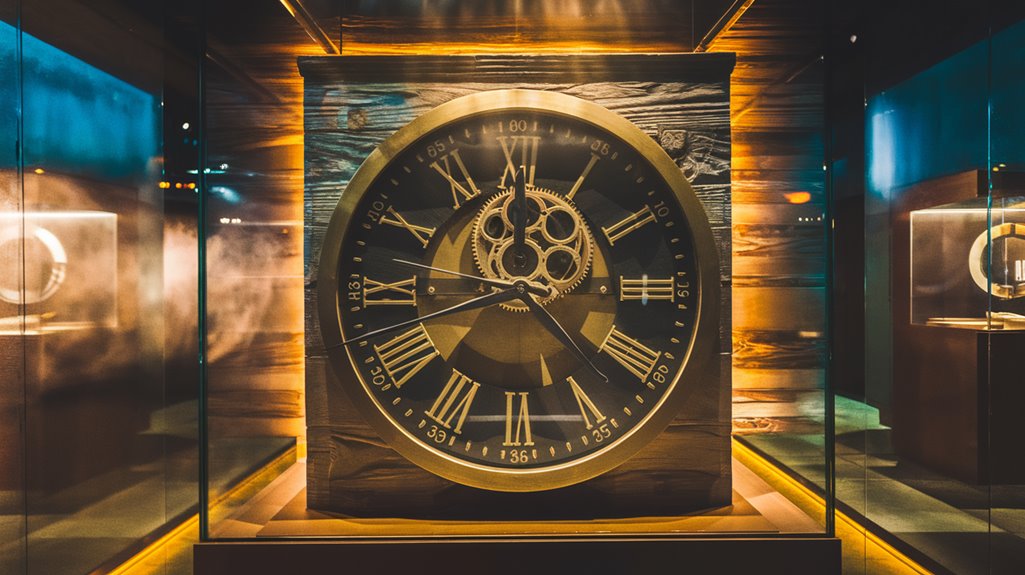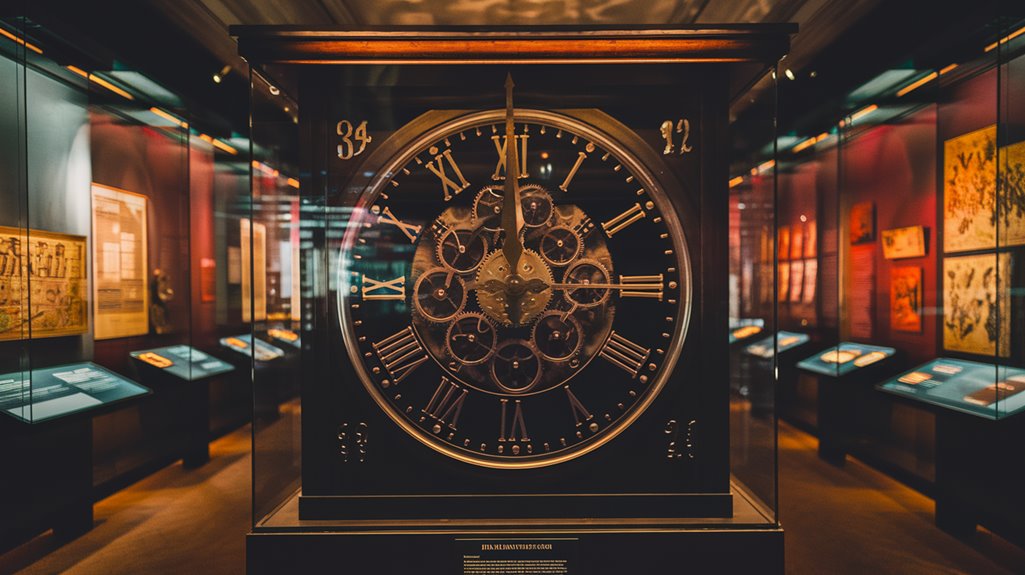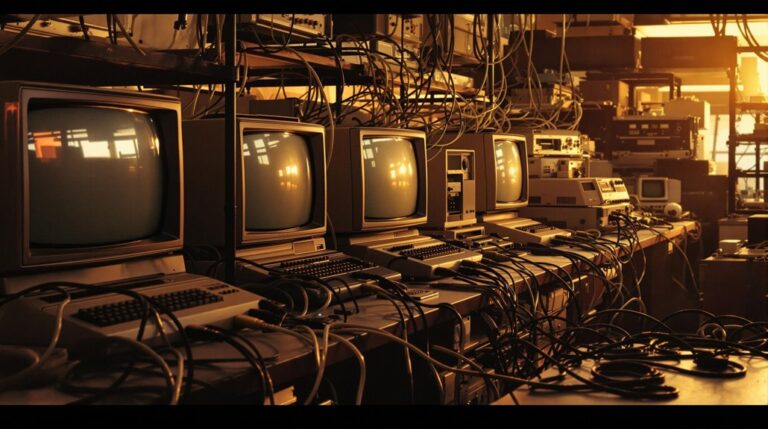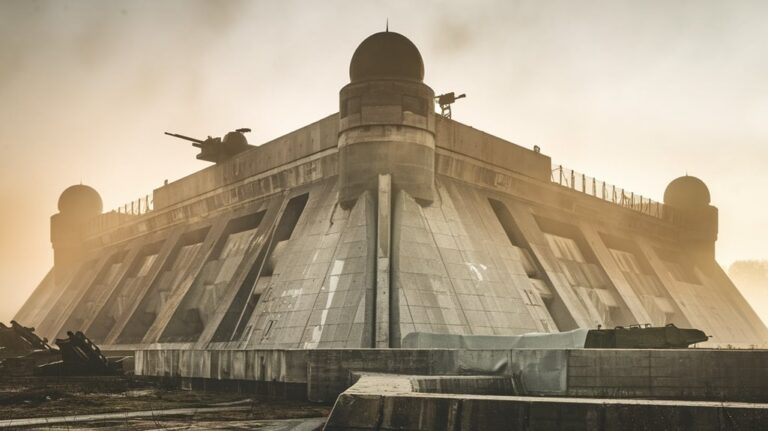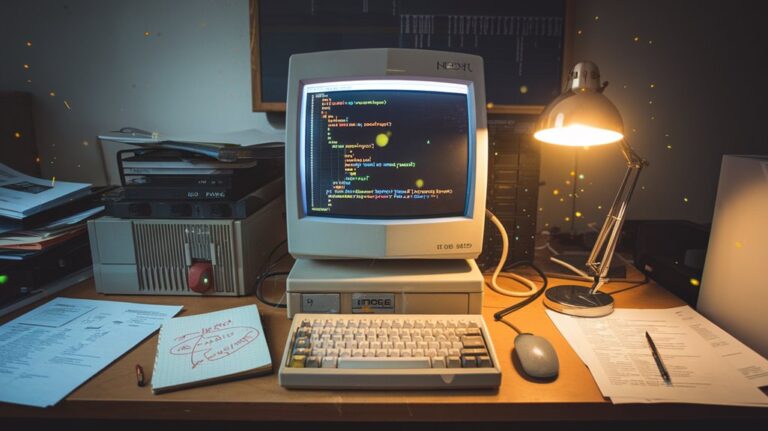The Doomsday Clock: Earth’s Most Ominous Timer
You might not realize that the world's most famous timepiece doesn't actually tick. The Doomsday Clock, conceived by atomic scientists who witnessed the devastating power of nuclear weapons, uses symbolic minutes to midnight to measure humanity's proximity to catastrophe. While it started as a warning about nuclear threats in 1947, today's clock considers multiple global dangers, from climate disasters to biological warfare. The current setting of 90 seconds to midnight raises an unsettling question: What will it take to turn back time?
The Birth of Humanity's Warning System
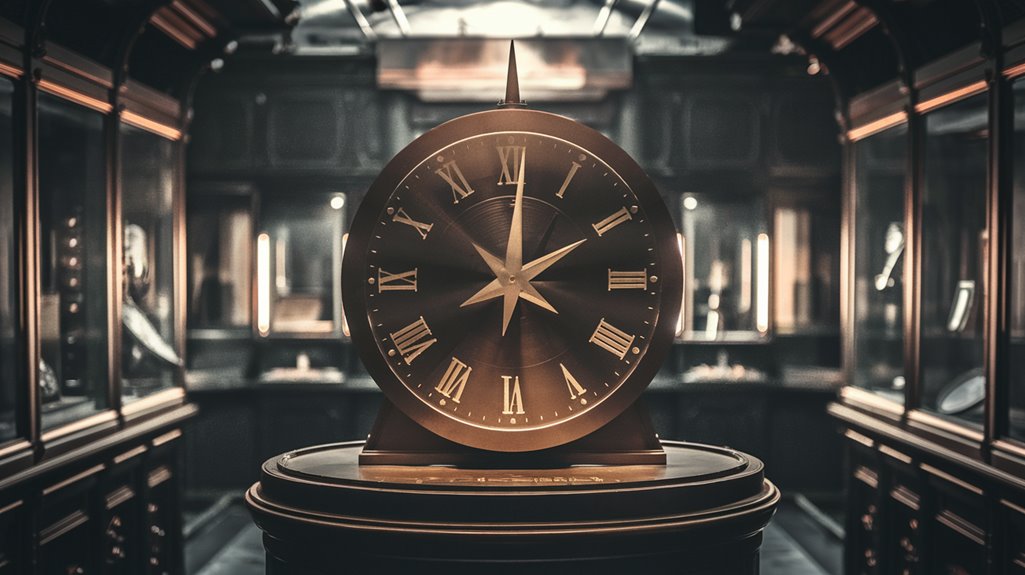
As the world grappled with the devastating aftermath of World War II's atomic bombings, a group of Manhattan Project scientists, including Albert Einstein and J. Robert Oppenheimer, channeled their concerns into unprecedented scientific collaboration.
In 1945, they established the Bulletin of the Atomic Scientists to address nuclear ethics and the grave responsibilities that came with atomic power.
Two years later, they introduced a powerful symbol that would serve as humanity's warning system: the Doomsday Clock.
Artist Martyl Langsdorf designed this metaphorical timepiece, initially set at seven minutes to midnight. The Clock's hands would move closer to or farther from midnight, reflecting humanity's proximity to catastrophe. The first public appearance of this iconic symbol came in June 1947 when it was featured on the Bulletin's cover.
Through the Bulletin's guidance, you'll find this symbol has transformed into a universal indicator of global threats, from nuclear warfare to climate change. The clock has been reset 25 times since its creation, marking pivotal moments in humanity's relationship with existential threats.
Key Moments That Moved the Hands
Three pivotal decades have shaped the Doomsday Clock's dramatic movements since its 1947 debut.
You'll find the 1940s marked by growing nuclear tensions, as the Soviet Union's first atomic test pushed the hands to three minutes.
The 1960s witnessed remarkable nuclear diplomacy with the Partial Test Ban Treaty, moving the clock back to a more reassuring 12 minutes.
The Bulletin of Scientists first introduced the clock as a magazine cover design to symbolize nuclear dangers.
The 1990s brought the most optimistic shift in the clock's history, with the hands settling at 17 minutes following the Soviet Union's collapse and START I treaty.
However, modern Doomsday implications have grown dire. By 2023, experts set the clock at 90 seconds to midnight, reflecting unprecedented global risks.
Understanding the Science Behind the Clock
While many view the Doomsday Clock as a simple metaphor, it's actually backed by rigorous scientific methodology and expert analysis. The Bulletin of the Atomic Scientists employs a distinguished panel of experts, including nine Nobel Laureates, who carefully assess global threats through a systematic evaluation process. This legacy of scientific oversight stems from its creation by Manhattan Project scientists in the aftermath of World War II.
You'll find that their scientific methodology encompasses multiple factors, from nuclear risks and climate change to artificial intelligence and biosecurity threats. The analysis doesn't just measure individual dangers – it evaluates their combined societal impact and potential to trigger catastrophic events. The current setting at 90 seconds to midnight reflects unprecedented levels of global risk.
Each year, the Science and Security Board conducts thorough discussions about humanity's proximity to catastrophe, weighing new technological developments and global events. This data-driven approach guarantees the Clock remains a credible indicator of civilization's vulnerability rather than just a symbolic warning.
Global Threats Shaping Our Current Reality
Today's world faces an unprecedented convergence of threats that directly influence the Doomsday Clock's position.
You're witnessing a complex web of dangers, from state-based conflicts to accelerating environmental collapse, all contributing to mounting global instability.
As you look at the immediate horizon, armed conflicts and the growing nuclear threat stand at the forefront of international concerns. Global cooperation remains crucial for addressing these interconnected crises.
You'll find these military tensions amplified by rampant misinformation and deepening societal polarization.
The La Niña phase forecasted for 2025 has done little to curb the rising global temperatures.
The environmental outlook is equally dire – you're living through record-breaking temperatures while biodiversity loss threatens essential ecosystems.
The situation's gravity increases as technological risks, particularly from AI and cyber threats, emerge alongside traditional dangers.
The combination of these challenges, coupled with economic uncertainties and climate milestones in 2025, creates a perfect storm of existential risks.
The Future of Earth's Survival Timer

Looking ahead at the Doomsday Clock's trajectory, you'll find both sobering challenges and potential opportunities for human intervention. The unprecedented 90-second setting in 2024 demands your immediate attention to address multiple existential threats, from nuclear tensions to climate change.
The disruptive technologies have expanded the scope of global threats that the Clock now monitors. You'll see that turning back the clock isn't impossible, as demonstrated by the 17-minute mark achieved in 1991. However, it requires decisive climate action and renewed nuclear diplomacy on a global scale. The Science and Security Board meets twice yearly to evaluate global events and determine if the clock needs resetting.
The clock's future hinges on your generation's response to these challenges. When you consider that the Science and Security Board adjusts the clock annually, you'll realize each year presents a new chance to influence its direction through collective action and international cooperation in managing global threats.

